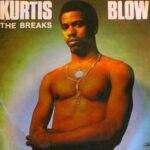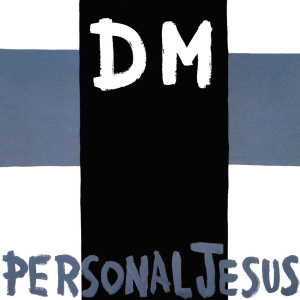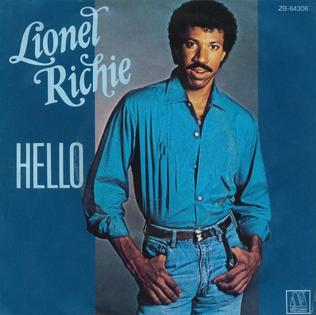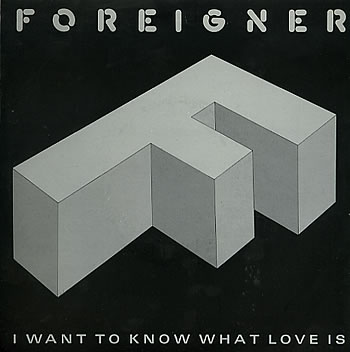 Kurtis Blow’s “The Breaks” is more than just a song—it is a cornerstone of hip-hop history, a track that helped transform rap from an underground curiosity into a commercially viable art form. Released in 1980, it became the first certified gold rap single, paving the way for future generations of MCs and DJs while defining what the early sound of hip-hop could be. It was playful, infectious, and groundbreaking, a perfect storm of rhythm, rhyme, and cultural resonance.
Kurtis Blow’s “The Breaks” is more than just a song—it is a cornerstone of hip-hop history, a track that helped transform rap from an underground curiosity into a commercially viable art form. Released in 1980, it became the first certified gold rap single, paving the way for future generations of MCs and DJs while defining what the early sound of hip-hop could be. It was playful, infectious, and groundbreaking, a perfect storm of rhythm, rhyme, and cultural resonance.
In retrospect, it’s hard to overstate the impact of “The Breaks.” It arrived at a time when rap was still a local phenomenon, limited mostly to New York City’s Bronx and Harlem neighborhoods. Hip-hop had been evolving for years in block parties and after-school clubs, but there was no mainstream blueprint. Kurtis Blow, with his charisma, savvy production, and the guidance of producer J.B. Moore, created something that could be heard on the radio without losing the raw essence of the street.
The Context: Hip-Hop on the Verge
The late 1970s were a period of explosive creativity in New York City. DJs like Kool Herc, Afrika Bambaataa, and Grandmaster Flash were experimenting with breakbeats, looping the percussive sections of funk records to create long stretches of instrumental rhythm. MCs were starting to rhyme over these breaks, turning block parties into communal storytelling sessions. The culture was vibrant, but it was contained. There was no record industry support, no commercial infrastructure, and few bridges to the wider public.
Kurtis Blow, born Kurtis Walker in Harlem, was already immersed in this emerging culture. He had been performing at parties and clubs, developing a sense for rhythm and flow that combined clever wordplay with crowd-pleasing hooks. By 1980, Blow had attracted the attention of Mercury Records, a label willing to take a gamble on rap. With a modest budget and a lot of enthusiasm, Blow set out to record something that captured the energy of live MCing while appealing to radio listeners.
Crafting the Anthem
“The Breaks” is built on simplicity and repetition, but its genius lies in how it balances structure and spontaneity. The song’s beat is a looped drum pattern, punctuated with funk guitar licks and a bassline that bounces along like a spring. The production is clean enough for radio play but retains the gritty energy of the street. Every element—the drums, bass, and guitar—is designed to emphasize the “breaks,” the rhythmic pauses where Kurtis Blow’s rhymes shine.
Lyrically, the song is structured around the concept of misfortune and good luck, using the word “break” in multiple ways. Kurtis Blow raps:
“Clap your hands, everybody, if you’ve got what it takes
‘Cause I’ve got the breaks, and you’ve got the breaks
And these are the breaks.”
This clever double entendre allows the song to be both a celebratory party track and a reflection on life’s unpredictability. The verses recount humorous and relatable stories: bad luck at work, getting fired, losing money—but always with an energy that invites participation. The chorus is an irresistible call-and-response, encouraging audiences to engage, clap, and chant along.
Breaking Into the Mainstream
“The Breaks” became the first rap single to achieve gold certification, a landmark moment that validated hip-hop as commercially viable. For many listeners outside New York City, this was their first exposure to the genre. The song’s accessibility—its catchy hooks, playful storytelling, and clear rhythm—made it digestible for radio audiences without diluting its authenticity.
Kurtis Blow’s charisma was key. Unlike some early MCs who remained local legends, Blow had the poise and stage presence to sell rap to a broader audience. His voice was authoritative yet inviting, commanding attention without overwhelming listeners. The production, handled by Blow and J.B. Moore, emphasized clarity, making every line understandable and every break impactful.
The song’s success also demonstrated that hip-hop could be more than party music; it could be an art form with broad cultural reach. Suddenly, labels were paying attention. Suddenly, DJs and MCs across the country were imagining the possibilities for rap as a commercial enterprise.
Musical Innovation and Influence
The musical structure of “The Breaks” is deceptively simple but deeply influential. Its focus on rhythmic repetition, punctuated by strategically placed breaks, set the template for countless hip-hop tracks to come. The call-and-response structure, drawn from African-American musical traditions, created an interactive experience that mirrored live performance.
The use of multiple meanings for the word “break” added a lyrical sophistication that many early rap tracks lacked. Blow was demonstrating that rap could be clever, pun-driven, and entertaining while remaining grounded in everyday experiences. He merged street-level authenticity with studio polish, a combination that would become a standard for future rap hits.
Cultural Resonance
“The Breaks” resonated beyond its musical innovation. Its humor and relatability made it an anthem for anyone who had experienced setbacks, big or small. Kurtis Blow’s stories of workplace mishaps, bad luck, and social embarrassment weren’t glamorous—they were human. Listeners could see themselves in the lyrics, which contributed to the song’s widespread appeal.
The track also reflected hip-hop’s emerging ethos: celebration of creativity, engagement with community, and resilience in the face of challenges. It was a reminder that music could be both fun and meaningful, a blueprint for how hip-hop could speak to a generation navigating economic challenges, social change, and cultural transformation.
“The Breaks” also helped codify performance techniques. The song’s emphasis on audience participation—clapping, chanting, and responding to the MC—would become a hallmark of live rap shows. It encouraged listeners to see themselves as part of the music, not just passive consumers. This interactive element became central to hip-hop’s identity.
Legacy and Influence
Over forty years later, “The Breaks” remains a seminal track in hip-hop history. Its influence is evident in the rhythmic structures, lyrical cleverness, and audience engagement techniques of countless artists who followed. Early rap acts like Run-D.M.C., LL Cool J, and the Sugarhill Gang drew inspiration from Blow’s ability to merge accessibility with street credibility.
The song also demonstrated the commercial potential of rap. Its success opened doors for other artists, convincing labels that investing in hip-hop could be profitable. Without “The Breaks,” the explosion of rap in the 1980s and ’90s might have unfolded more slowly, delayed by skepticism from the music industry.
Musically, the song’s structure—the use of looping breaks, call-and-response hooks, and narrative storytelling—remains influential. Modern hip-hop continues to rely on these techniques, whether in mainstream pop-rap hits or experimental underground tracks. The playful, pun-driven lyrical style pioneered by Blow also persists in artists who blend humor with social commentary, from De La Soul to Chance the Rapper.
Kurtis Blow’s Enduring Persona
Part of “The Breaks”’ appeal comes from Kurtis Blow himself. He was approachable, charismatic, and genuine—qualities that contrasted with the swagger-driven persona of many later rap stars. His delivery is confident but not aggressive, inviting listeners into his world rather than asserting dominance over them. This openness helped broaden rap’s audience, making it less intimidating to newcomers while maintaining credibility with fans of the street scene.
Blow’s role as one of hip-hop’s first professional artists cannot be overstated. He proved that MCs could have long-term careers, work with major labels, and achieve mainstream recognition without compromising their artistic vision. He showed that rap could be playful, insightful, and commercially successful all at once.
The Song’s Narrative Genius
“The Breaks” thrives because of its narrative genius. Each verse tells a mini-story that’s humorous, relatable, and slightly exaggerated. Listeners encounter characters experiencing setbacks, failures, and mishaps—but these stories are presented with wit and rhythm, transforming adversity into entertainment.
By highlighting ordinary struggles—losing a job, encountering bureaucratic frustration, or dealing with romantic misfortune—Blow made the song universal. Its message was simple yet powerful: life is unpredictable, but music can help you cope, celebrate, and move forward.
From Street Parties to Gold Certification
The journey of “The Breaks” from street parties to gold certification is emblematic of hip-hop’s evolution. The song captured the essence of block party culture while translating it into a studio-friendly format. Its success validated the art form, proving that hip-hop could thrive in mainstream contexts without losing its roots.
This transition was crucial. Before “The Breaks,” rap was largely confined to local scenes and live performance. After “The Breaks,” it became a genre with tangible commercial potential, capable of reaching audiences nationwide and beyond. Kurtis Blow became one of the first rap stars to bridge the gap between underground credibility and mainstream appeal.
Humor, Skill, and Accessibility
One of the enduring qualities of “The Breaks” is how it balances humor, lyrical skill, and accessibility. The song doesn’t rely on aggression or confrontation; it relies on rhythm, wordplay, and crowd engagement. Its clever use of language—especially the multiple meanings of “break”—invites listeners to think while they groove.
Blow’s performance also emphasizes timing and cadence, demonstrating an early mastery of flow that would influence generations of MCs. His delivery feels natural, confident, and performative without being overbearing, a skill that helped establish standards for future hip-hop recording techniques.
Conclusion: Breaking the Mold
“The Breaks” is a landmark in music history, a track that changed hip-hop’s trajectory forever. Its clever lyrics, infectious groove, and interactive energy made it a template for future artists, while its commercial success demonstrated rap’s potential to thrive outside local scenes. Kurtis Blow created more than a hit; he created a blueprint for how hip-hop could entertain, resonate, and endure.
Decades later, the song remains a touchstone for fans, historians, and artists alike. It reminds listeners of a time when hip-hop was still finding its voice, a moment when creativity, rhythm, and storytelling collided in a single, unforgettable track.
“The Breaks” is not just about misfortune—it’s about resilience, creativity, and the power of music to turn life’s challenges into something uplifting. It’s a song that broke records, broke barriers, and broke the mold for what hip-hop could achieve. And its influence can still be felt in every rhyme, beat, and break that follows.
It wasn’t just a song; it was a revolution.


